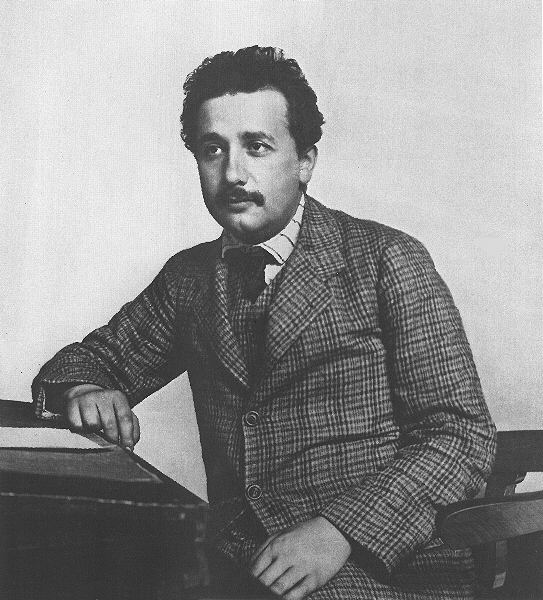Enboarding with Help from Einstein
 The current issue of New Scientist has a story on of how Einstein's theory of relativity can be applied to the problem of how do you get all those people onto that airliner in that amount of time. Einstein's theory coupled with a fair amount of modeling and simulation (CS 350) activity, that is.
The current issue of New Scientist has a story on of how Einstein's theory of relativity can be applied to the problem of how do you get all those people onto that airliner in that amount of time. Einstein's theory coupled with a fair amount of modeling and simulation (CS 350) activity, that is.Enter Eitan Bachmat and his colleagues at Ben-Gurion University of the Negev in Israel. Bachmat wasn't initially aiming to solve the problem of "enplaning", as airlines rather grandly call it. He was studying the performance of digital storage systems such as PC hard drives, looking at how to read and write data most efficiently. Say you send your hard drive a big bunch of read/write requests. What you want to know is the quickest way to carry out those tasks. How do you find the fewest drive rotations needed to do the job?There's more: Window seats in the back first helps. Who'd've thunk it?!
One day a colleague who saw this work said, "Hey, that looks a lot like airplane boarding," and so Bachmat and his colleagues decided to explore this parallel route. "We thought we could do this and take stuff back to the hard drive problem," he says.
[...]
Fortunately, physics has something to say about problems like this. Odd as it may seem, it occurred to Bachmat and his colleagues that the way passengers fill up a plane looks like relativity's description of how things move through the four dimensions of space-time under the influence of gravity.
According to relativity, an object in "freefall" follows the trajectory that ages it the most. Throw a stone into the air: it will trace out an arc and return to the ground. Attach a stopwatch to the stone and you would see that, out of all the trajectories through space-time the stone might have taken under the influence of gravity, the arc of its flight is the one in which the most time passes. In other words, the stone maximises the amount of time (in its own reference frame) that passes as it flies up and then falls back to Earth.
[...]
Bachmat and his colleagues chose their metric so that the past-future relationship between passenger "space-time" points is precisely the same as the blocking relationship on a real aircraft: in passenger "space-time", if someone is blocking you, they are in your future.
"You can determine whether passengers are in each other's future or past"
Having called their virtual passengers to this mathematical boarding gate, Bachmat and his colleagues can calculate the overall boarding time by finding the equivalent of a free-fall trajectory through that passenger "space-time". The maths [sic -- damned Brits] isn't simple but it gives you formulae for calculating boarding time under different boarding policies. Crucially, it also lets you see the effect of varying parameters such as legroom and luggage-stowing time (Journal of Physics A, DOI: 10.1088/0305-4470/39/29/L01).
So what did they discover? "What turns out to be critical is the notion of congestion," says Bachmat. The team incorporated this into their model as a variable k, which depends on legroom, passenger width and number of people per row. "It tells you how crammed passengers are."
The team found that policies that work well for small k - the rarefied world of first class - become terrible for the high-k crush back in economy. Where congestion is low, furthest-row-first works well, but this becomes progressively worse as congestion increases. The people destined for seats 68A and 68B, for example, could be standing alongside row 67, waiting for the woman in 68C to stuff her bag into the overhead locker. While they wait, they block the people heading for row 67 from reaching their locker, and so on. So even with a furthest-row-first policy, high congestion means that the queue will be all the way out of the plane door within minutes, with not one other person able to get to their own row.
For really high congestion, random boarding soon becomes the better option. For the moderate-squeeze conditions that are the reality for most of us, the best balance is a high level of row randomness combined with a touch of back-to-front.
"For moderate-squeeze conditions the best balance is a high level of row randomness combined with a touch of back-to-front"
[...]
What also emerged is that boarding time is proportional to the square root of the number of passengers. Considering how complex things become as the numbers increase, that's actually not bad, but it still has significant implications for today's ever-bigger airplanes, like Airbus's 555-seat superjumbo, the A380.
The online version of the article itself remains in a subscriber-only zone for a while, but it's in the current print edition.
(Hat tip to Todd S.)

0 Comments:
Post a Comment
<< Home